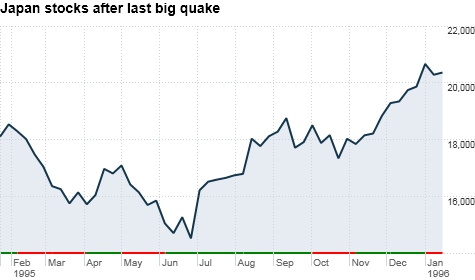Nikkei 225 Index RealTime Live Streaming and Historical Chart
Post on: 5 Июнь, 2015 No Comment

5 Years/ Weekly Candle
Nikkei 225 Index for Last 5 Years
Help — How to Use?
Read About How to Use Chart Module
About Nikkei 225 Index
The Nikkei 225, which is one of the main stock market indexes for the Japanese Tokyo Stock Exchange along with Topix, commenced functioning on 7th September, 1950, although it had already been in operation since 16th May, 1949. Having been renamed as the Nikkei Dow Jones Stock Average between 1975 and 1985, this index holds the honor of being one of the most popular averages amongst all the Japanese equities due to which it is calculated and printed daily by the newspaper of the same name ever since its year of establishment. As mentioned in its name, this index has 225 components all of which are reviewed once annually and are quoted as price weighted averages with the Japanese Yen as their unit similar to the Dow Jones Industrial Average. An offshoot of the Nikkei 225 is the Nikkei 225 Futures which was launched in 1986 at the Singapore Exchange, in 1988 at the Osaka Securities Exchange and in 1990 at the Chicago mercantile Exchange.
The chronology chart of the Nikkei 225 index begins on 7th September, 1950, when the Japanese Tokyo Stock Exchange introduced the calculation of the average stock price by employing the ex-right method of adjustment as was the norm in the American Dow Jones. This continued for the next 18 years after which it was discontinued from 12th November, 1968, to be replaced by a new index and hence a new method of calculation. The responsibility of the calculation of the value of the index was levied on the Tokyo stock Exchange on 1st July, 1969, then the Nikkei Inc a year later on 1st July, 1970, and finally fell on a Nikkei subsidiary another year later on 1st July, 1971. This system of calculation continued for the next four years till on 1st May, 1975, this index was granted exclusive rights by the American Dow Jones to use their method of calculation for acquiring the value of stock price average.
The timeline of the Nikkei 225 index continued on to 4th January, 1982, when the index began calculation of stock average price of 500 companies listed on the Nikkei Dow Jones and then to 1st April, 1985 when the over-the-counter average stock price of the Nikkei 225 stocks began to be calculated and published. The next five years of this index were witness the expansion of this stock index to other countries like Singapore and Chicago, US, in form of futures and options trading. It was on 14th December, 1990, that the new addition and deletion standards were announced by the Nikkei although these turned out to be short lived because changes were made to these standards within a year on 1st October, 1991.
One of the most important characteristics of the Nikkei 225 is its insistence with the Index Committee to adhere to the principals which govern the calculation of the index as this is one of the surest ways of ensuring historical continuity. This is why the annual reviews have always been performed by an elite group of carefully picked academicians and professionals so that the issues faced by the exchange in terms of structural changes are reflected in the daily operation of the stock market. It is obligatory for the committee to be mindful of the fact that since the Nikkei 225 acts like a mirror for reflecting the overall performance of the stocks, its components need to be changed from time to time so that apart from maintaining the liquidity of the index, it aptly represents the industrial infrastructure of Japan as a nation as well.
The Nikkei 225 has coped well with the rapid changes which have marked the Japanese economy over the last 10 years and the curve of the index reflects that although there ahs been an acceleration in the pace with which the change has occurred, the economy has been suffering from recession due to which capital investment has been sluggish and consumer spending has been at its all time low. As a result, the stock market stands to be bi-polarized with clear lines drawn between winners and losers and mergers and acquisitions being the order of the day. The Nikkei 225 thus represents the Japanese economic conditions with accuracy and is poised to play an instrumental role in the international market through its wide range of applications.
Real-Time Quotes and Charts Navigator
Are you interested in real-time streaming charts for other indices, stocks, currencies, commodities and other asset classes? Just click on the available links within each asset class.














